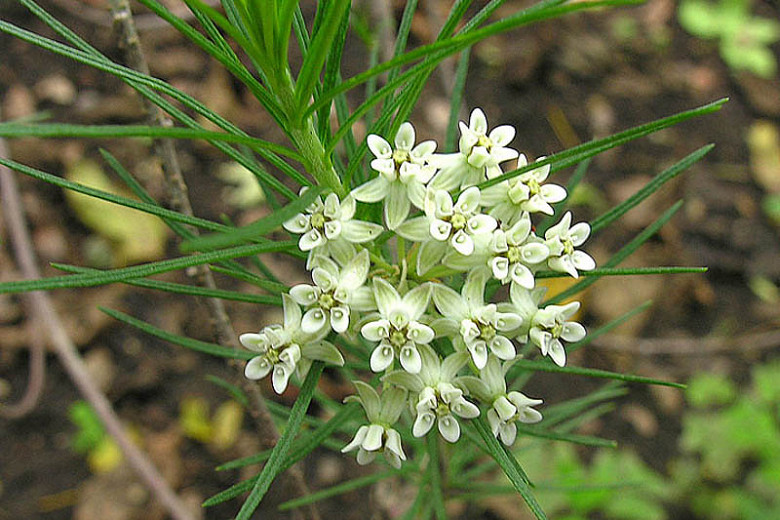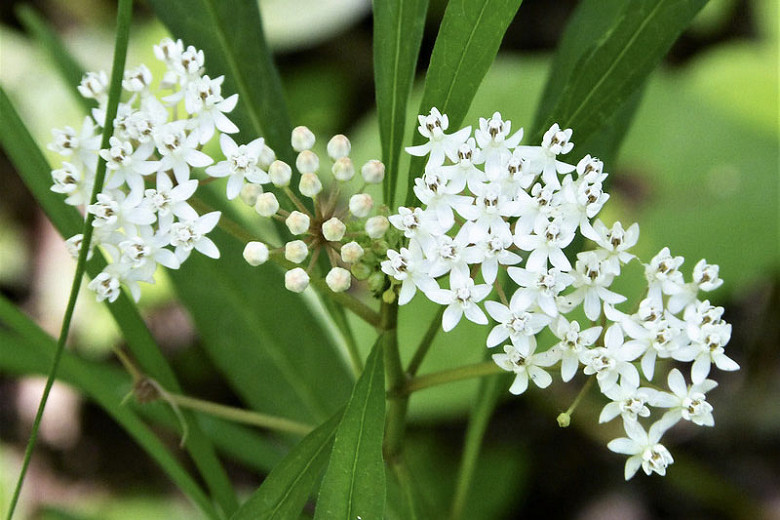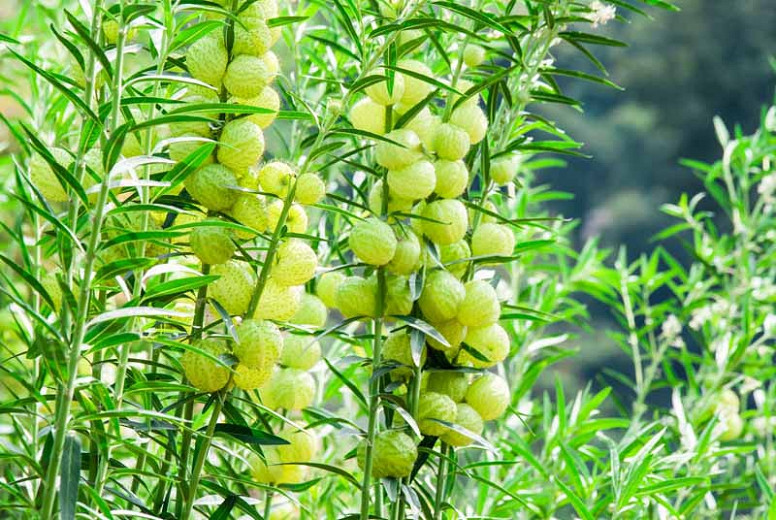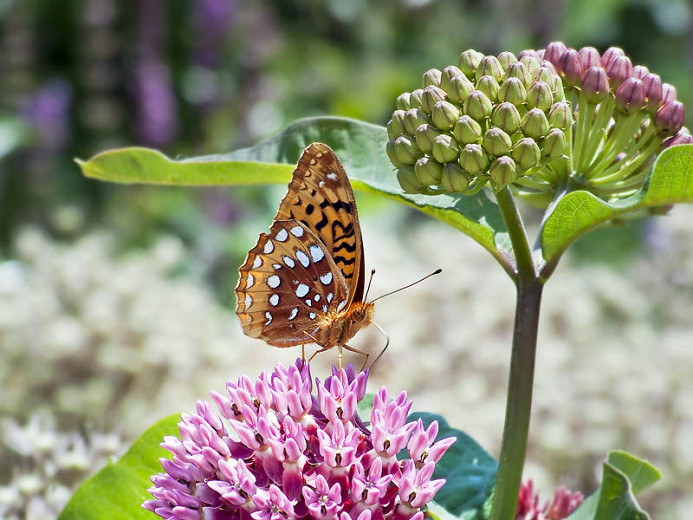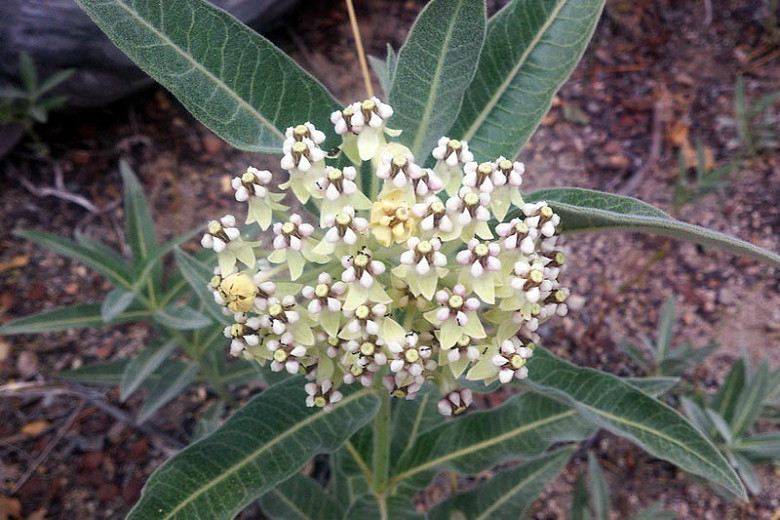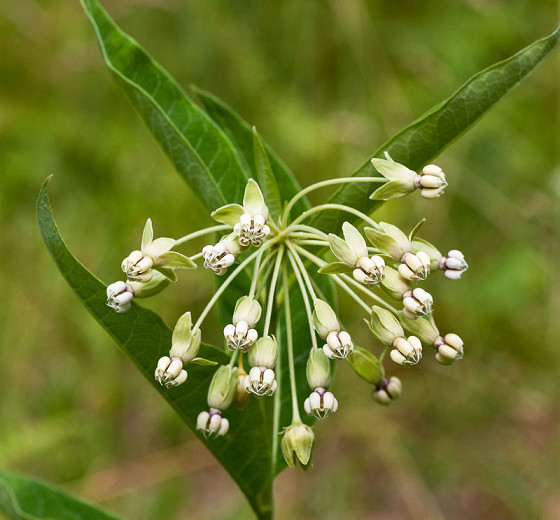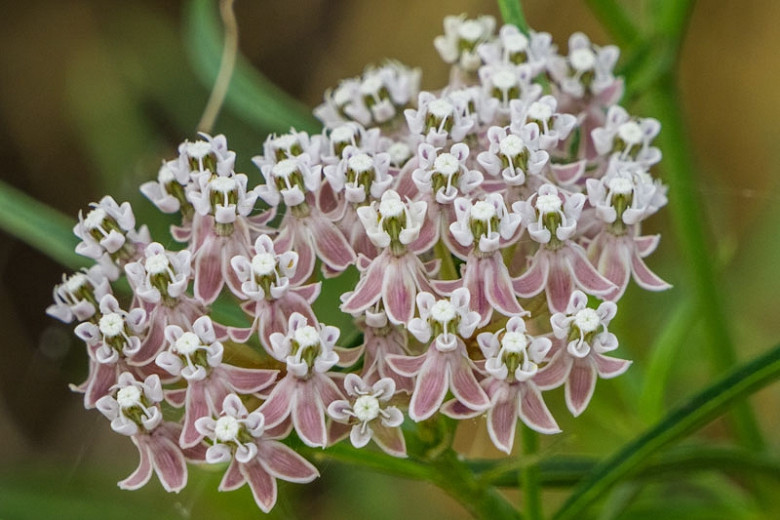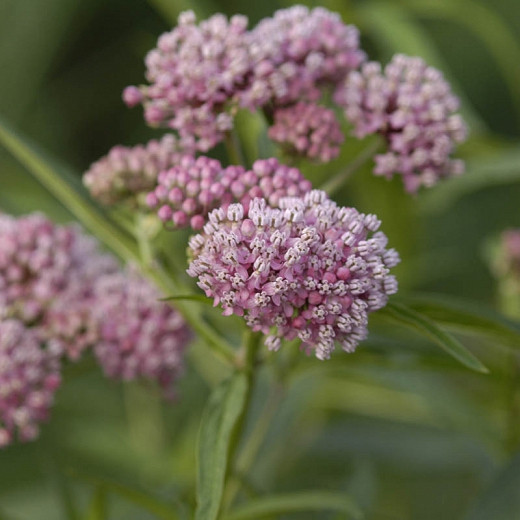Asclepias linaria (Pine-Needle Milkweed)
Asclepias linaria (Pine-Needle Milkweed) is an upright subshrub with many erect or ascending stems bearing soft, finely textured, pine needle-like leaves, 1-2 in. long (2-5 cm), along their length. From winter to fall, small clusters of lightly fragrant, creamy-white flowers are borne at the stem tips. They are a great nectar source for butterflies, bees, and other pollinating insects.
Asclepias linaria (Pine-Needle Milkweed) is an upright subshrub with many erect or ascending stems bearing soft, finely textured, pine needle-like leaves, 1-2 in. long (2-5 cm), along their length. From winter to fall, small clusters of lightly fragrant, creamy-white flowers are borne at the stem tips. They are a great nectar source for butterflies, bees, and other pollinating insects. The blossoms give way to tear-shaped seed follicles that open to release their white plumed seeds. Native to the Southwestern U.S., this perennial wildflower is drought and heat-tolerant and makes an attractive desert landscape plant with its interesting shape and unusual flower clusters that attract butterflies and other insects.
Requirements
| Hardiness | 9 – 11 |
|---|---|
| Plant Type | Perennials, Shrubs |
| Plant Family | Asclepias |
| Exposure | Full Sun, Partial Sun |
| Season of Interest | Spring (Early,Mid,Late)Summer (Early,Mid,Late)FallWinter |
| Height | 2' – 5' (60cm – 150cm) |
| Spread | 2' – 3' (60cm – 90cm) |
| Spacing | 24″ – 36″ (60cm – 90cm) |
| Water Needs | Low |
| Maintenance | Low |
| Soil Type | Loam, Sand |
| Soil pH | Alkaline, Neutral |
| Soil Drainage | Well-Drained |
| Characteristics | Showy |
| Native Plants | United States, California, Southwest, Arizona, New Mexico |
| Tolerance | Deer, Drought, Dry Soil |
| Attracts | Bees, Butterflies |
| Garden Uses | Beds and Borders |
| Garden Styles | Informal and Cottage, Prairie and Meadow |
